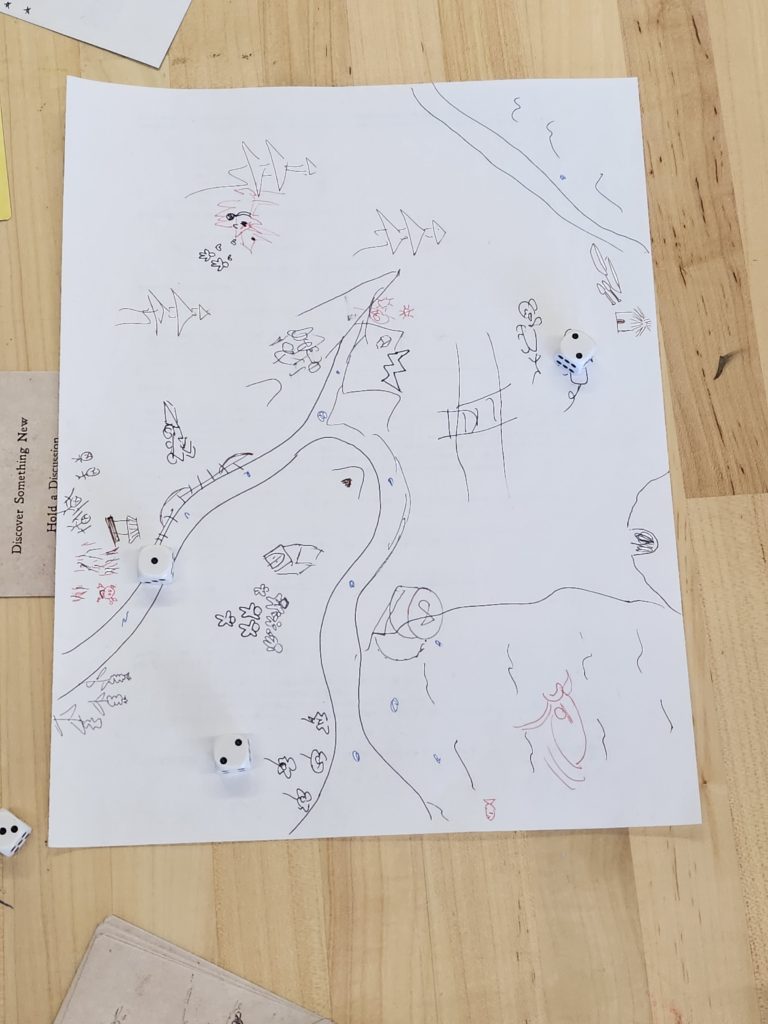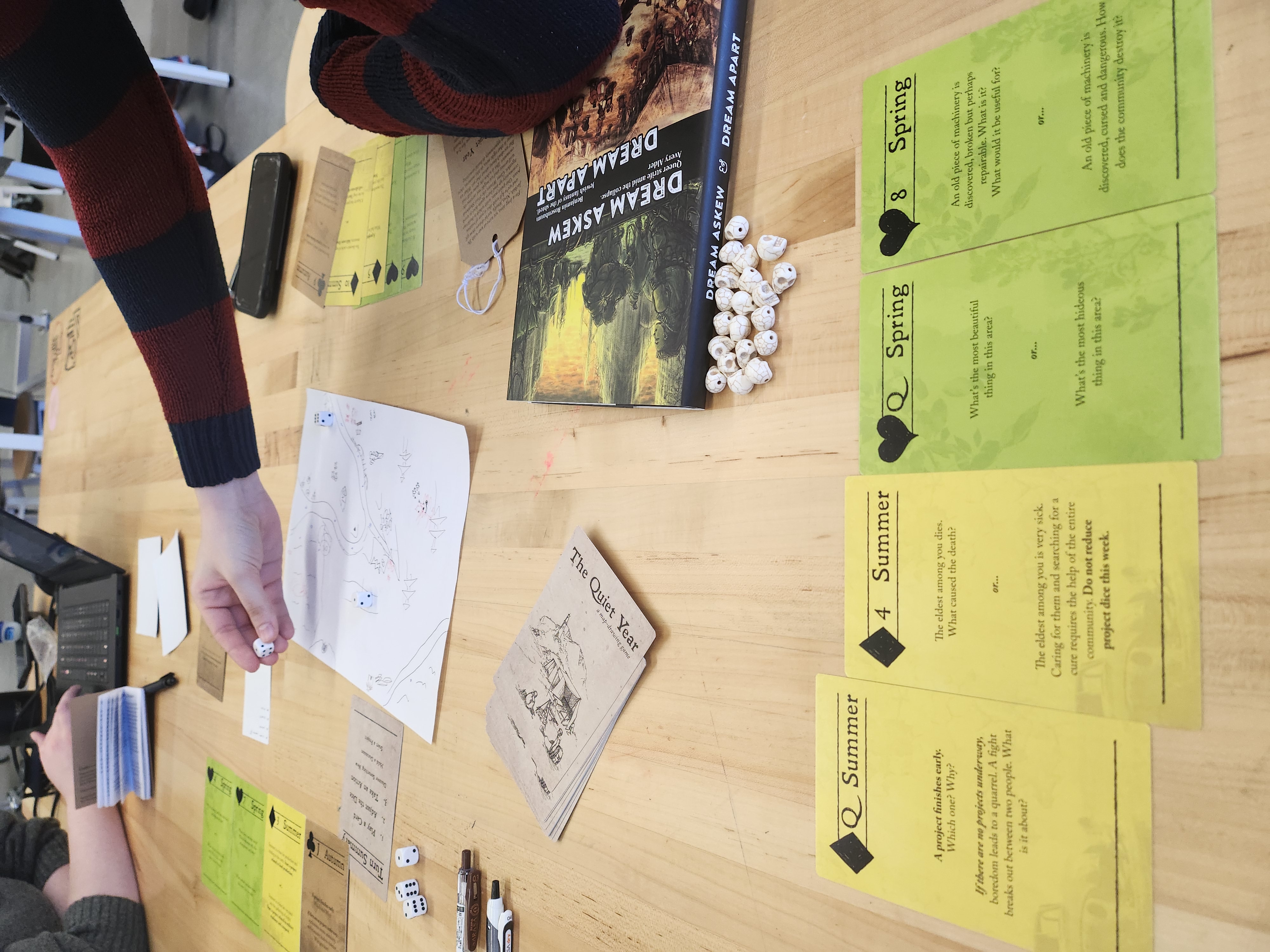The Quiet Year is my first table role-play game even though I played a lot of role-playing games on the computer in the past. I feel very different between playing The Quiet Year and other online RPG games. When my group start to play The Quiet Year, the first thing I learned is that The Quiet Year has a long pre-story context. Usually, it’s hard to find such a long pre-story context in RPGs online(or digital games). The reason for it, I think it’s because of a kind of ‘promotification’ during the game process. While, in RPGs online, the system will play the role of narrator in the game. It’s not necessary to have so long pre-story context. The system could teach the player after a short pre-context. The world construct of RPGs online will be taught to the players when they’re playing. However, in the table RPGs, the player who plays the narrator role has less chance to intervene when the game starts to play by the players, he is more like a coordinator. And the players also don’t want the narrator or coordinator to stop the game anytime.
Second, the content volume between table RPGs and Online RPGs is different. Even though there are quite long and huge context volumes at the beginning of pre-context. However, definitely, the content volume of Online RPGs is much more than table RPGs. For example, in the Quiet Year, the content when participants start to play, the content is completely empty expect prompt cards. It requires the participants’ activity passion with engaging in this game. Players have to build constructions in the world. And explain the reason for why doing that. They also have to make some difficulties and obstacles so they can bring some challenges. This requires more embodiments for the players. Well, they can determine whether this world can be completely a paradise or a hell to live in.
Also, I don’t forget the map building at the begging of the Quiet Year. It’s also the reason why the Quiet Year has so many pre-stroy contexts. In most digital RPGs, maps are pre-fixed to wait for the players to explore. However, in the Quiet Year, we don’t have that . We have to determine our landscapes and resources on our own. Thai promotes a kind of replay abilities of this game. Players can play multiple times the Quiet Year with different experiences with maps. In addition, one other aspect of the Quiet Year relates to the player’s agencies. I always think about all RPGs should have sociality in communities since communities are built by participants and players. Socialiltymeans players should interact and communicate with others. However, in Quiet Year I felt less sociality with my peers. More likely, we were working as a whole, just like the agent of the whole human. The interaction and communication between my peers and me become non-necessary. Actually, I felt a lit bit lost here.
My experiences of playing the Quiet Year are not that good, somehow. First, I think it takes too long to get directly into actual gameplay. Second, it requires all players to be well-motivated. Untorallity, I am not good at storytelling even though I want to express some brilliant thoughts. Third, the game just ends rapidly with one card that says a snowstorm came and everyone is dead; the game is over. Just my personal thought, I like the RPGs that give me clear or some metaphoric end words. So that I can know what I played is meaningful. Besides those, this game has some brilliant ideas I think. The self-map construction and prompting card design are great; except for the card I mentioned above. The map is the greatest result after playing, you can see all your peers’ efforts and it has been condensed into a map. Other, the cards do really good gobs in prompting our story to go forwards and provide a lot of inspiration for game story development.

